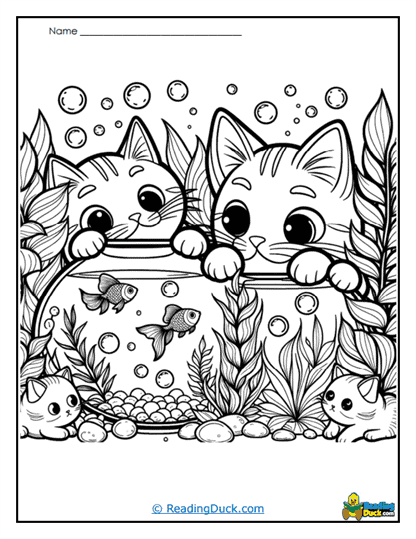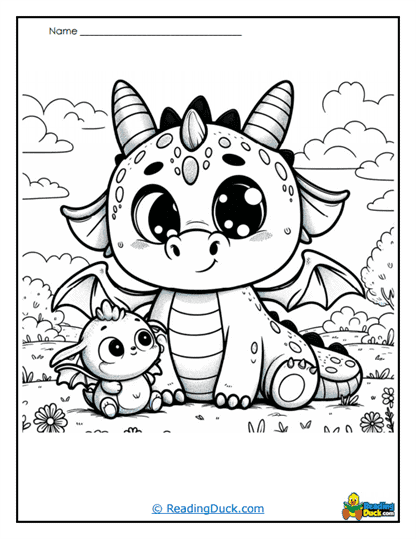Coloring Pages Worksheets
About Our Coloring Pages
Our collection of Coloring Pages Worksheets offers a wide variety of printable coloring pages that cater to the diverse interests of young learners. This collection includes multiple subcategories such as Butterfly, Cats, Cute, Dinosaur, Dog, Dragon, Everyday Things, Mermaid, Princess, Squishmallow, and Unicorn, with each subcategory containing several designs. All worksheets are accessible in PDF format, making them convenient to view electronically, download, and print for easy use in any learning environment.
What Are Coloring Pages Worksheets?
Coloring pages worksheets are educational tools designed to support early childhood development, particularly in the area of fine motor skills. These worksheets typically consist of black-and-white line drawings that children can color in using crayons, colored pencils, or markers. The simplicity of the designs allows children to focus on the act of coloring itself, which serves as both a creative outlet and a developmental exercise.
The primary goal of these worksheets is to help young learners improve their ability to control the small muscles in their hands and fingers, which are essential for tasks like writing, drawing, and manipulating small objects. By engaging in coloring activities, children practice staying within lines, choosing appropriate colors, and completing a task from start to finish. This process not only enhances their fine motor skills but also contributes to their cognitive, emotional, and creative development.
Coloring pages worksheets are versatile and can be used in various educational settings, from traditional classrooms to homeschooling environments. They are often integrated into lesson plans as supplementary activities that reinforce the main themes of a unit, provide practice with specific skills, or offer a calming, quiet-time activity. Moreover, these worksheets are accessible and straightforward, making them a practical resource for educators and parents alike to use with young children.
The Benefits of Coloring Pages for Fine Motor Skills Development
Coloring pages are not only a fun and engaging activity for young children, but they also play a crucial role in developing essential pre-reading skills, particularly fine motor skills. Fine motor skills involve the coordination of small muscles in the hands and fingers, which are necessary for tasks like writing, cutting, and manipulating small objects. By integrating coloring pages into a child’s daily routine, educators can significantly contribute to the development of these skills in a structured yet enjoyable manner.
Key Benefits of Coloring Pages
- Hand-Eye Coordination: Coloring within the lines requires children to carefully coordinate what their eyes see with the movements of their hands. This practice improves their ability to control and direct their hand movements in precise ways, which is essential for writing and other fine motor activities.
- Grip Strength and Pencil Control: Coloring pages encourage children to hold and control a crayon or pencil, which builds the muscles in their fingers and hands. This grip strength is foundational for later writing skills, as it enables children to hold writing tools correctly and with ease.
- Focus and Concentration: Completing a coloring page requires sustained attention and concentration. As children work to fill in each area of the page, they learn to focus on a task for an extended period. This skill is vital in a classroom setting, where students are required to concentrate on various academic tasks.
- Creativity and Color Recognition: While staying within the lines is important, coloring pages also allow children to express themselves creatively. They can choose their colors, experiment with different combinations, and make decisions about how to complete their work. This enhances their understanding of color theory, fosters creativity, and gives them a sense of autonomy and pride in their work.
- Preparation for Writing: The motions used in coloring—such as tracing and filling in shapes—are precursors to the strokes used in writing. By practicing these movements, children develop the fine motor control necessary to form letters and numbers properly.
- Emotional Expression and Stress Relief: Coloring can be a calming activity that helps children manage their emotions. It provides a quiet time for self-reflection and expression, allowing children to process their thoughts and feelings in a non-verbal way. This can be particularly beneficial for young learners who may not yet have the verbal skills to articulate their emotions fully.
Integrating Coloring Pages Worksheets into the Curriculum
Coloring pages worksheets are a versatile tool that can be easily integrated into a pre-reading curriculum, benefiting children in various grade levels, particularly in preschool, kindergarten, and early elementary grades (Pre-K to 1st grade).
Practical Tips for Using Coloring Pages in the Classroom
- Morning Warm-Up Activity: Use coloring pages as a gentle warm-up activity at the beginning of the day. This allows students to settle in, focus their minds, and prepare for more structured learning activities.
- Fine Motor Centers: Incorporate coloring pages into fine motor skills centers, where students can rotate through different activities that strengthen their hand muscles and improve coordination. Pair coloring pages with other fine motor tasks like cutting or tracing for a comprehensive fine motor development session.
- Thematic Units: Choose coloring pages that align with your current thematic unit. For example, during a unit on animals, use the Cats, Dogs, or Dinosaurs coloring pages to reinforce the theme and vocabulary. This helps to integrate art with content learning, making the experience more meaningful and cohesive for students.
- Creative Storytelling: After completing a coloring page, encourage students to create a story based on the picture they colored. This activity promotes creativity, language development, and narrative skills. It also helps to build a connection between visual arts and literacy.
- Quiet Time Activity: Coloring pages are excellent for quiet time or as a calming activity after more active lessons. They can help children transition smoothly between activities and provide a break from more rigorous tasks while still being productive.
- Parent Involvement: Send coloring pages home as a simple homework activity that encourages parental involvement. Parents can engage with their children by discussing the pictures, helping with color choices, and asking their children to tell a story about the finished work.
- Holiday and Seasonal Themes: Utilize the Everyday Things subcategory to find coloring pages that match holidays or seasons. These themed pages can be used for special activities, decorations, or as part of holiday celebrations in the classroom.
- Assessment of Fine Motor Progress: Use completed coloring pages as a form of informal assessment. By observing how well students stay within the lines, the pressure they apply with their crayons, and their choice of colors, teachers can gauge the development of fine motor skills and adjust their instruction accordingly.
Supplementary Activities
- Color Sorting: After completing a coloring page, have students sort crayons or colored pencils by color. This reinforces color recognition and organization skills.
- Cutting Practice: Once a page is colored, students can practice cutting along the edges or around specific shapes within the page. This integrates fine motor practice with scissor skills.
- Color by Number: Incorporate color-by-number activities to add a layer of challenge and introduce basic number recognition and math skills.
- Collaborative Mural: Create a large mural by having each student color a piece of a larger picture. Once all pieces are completed, assemble them on a bulletin board. This promotes teamwork and gives students a sense of contribution to a larger project.
- Storybook Creation: Compile colored pages into a storybook. Each student can contribute a page, and the class can collectively create a narrative that ties all the images together. This activity integrates art with storytelling and literacy skills.
Enhancing Student Development through Coloring Pages
Coloring pages worksheets are more than just an artistic outlet; they are a powerful tool for fostering various skills essential to a child’s academic and personal growth. By regularly incorporating these worksheets into the curriculum, educators can support the development of fine motor skills, enhance focus and concentration, and encourage creativity. These skills lay the foundation for successful learning in the early years and beyond, preparing students not only for writing but for a lifetime of confident, creative, and focused learning experiences.










